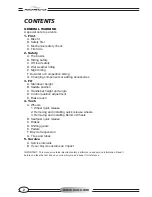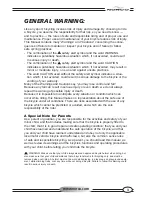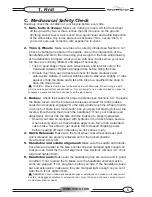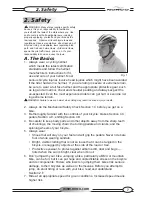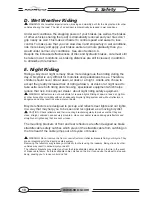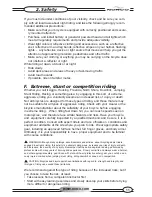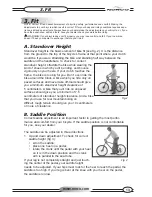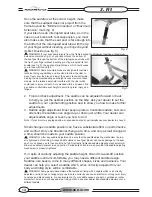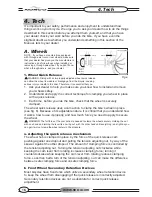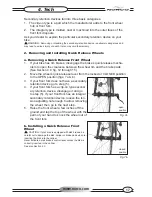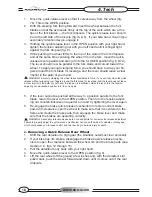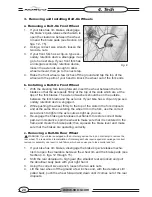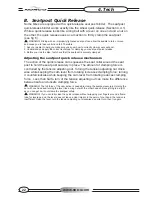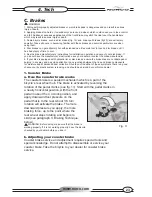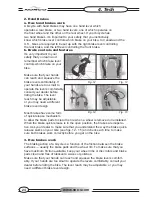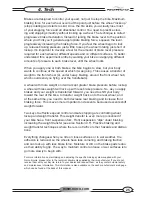
www.norco.com
10
D. Wet Weather Riding
WARNING: Wet weather impairs traction, braking and visibility, both for the bicyclist and for other
vehicles sharing the road. The risk of an accident is dramatically increased in wet conditions.
Under wet conditions, the stopping power of your brakes (as well as the brakes
of other vehicles sharing the road) is dramatically reduced and your tires don’t
grip nearly as well. This makes it harder to control speed and easier to lose
control. To make sure that you can slow down and stop safely in wet conditions,
ride more slowly and apply your brakes earlier and more gradually than you
would under normal, dry conditions. See also Section 4.C.
Despite the increased effectiveness of disc and hydraulic brakes, care must still
be taken in wet conditions, as braking distances are still increased, in addition
to diminished tire traction.
E. Night Riding
Riding a bicycle at night is many times more dangerous than riding during the
day. A bicyclist is very difficult for motorists and pedestrians to see. Therefore,
children should never ride at dawn, at dusk or at night. Adults who chose to
accept the greatly increased risk of riding at dawn, at dusk or at night need to
take extra care both riding and choosing specialized equipment which helps
reduce that risk. Consult your dealer about night riding safety equipment.
WARNING: Reflectors are not a substitute for required lights. Riding at dawn, at dusk, at night or
at other times of poor visibility without an adequate bicycle lighting system and without reflectors is
dangerous and may result in serious injury or death.
Bicycle reflectors are designed to pick up and reflect street lights and car lights
in a way that may help you to be seen and recognized as a moving bicyclist.
CAUTION: Check reflectors and their mounting brackets regularly to make sure that they are
clean, straight, unbroken and securely mounted. Have your dealer replace damaged reflectors and
straighten or tighten any that are bent or loose.
The mounting brackets of front and rear reflectors are often designed as brake
straddle cable safety catches which prevent the straddle cable from catching on
the tire tread if the cable jumps out of its yoke or breaks.
WARNING: Do not remove the front or rear reflectors or reflector brackets from your bicycle. They
are an integral part of the bicycle’s safety system.
Removing the reflectors may reduce your visibility to others using the roadway. Being struck by other
vehicles may result in serious injury or death.
The reflector brackets may protect you from the brake straddle cable catching on the tire in the event
of brake cable failure. If a brake straddle cable catches on the tire, it can cause the wheel to stop sud-
denly, causing you to loose control and fall.
2. Safety
Summary of Contents for multi-speed bicycles
Page 1: ...for multi speed bicycles 7th Edition www norco com ...
Page 2: ......




